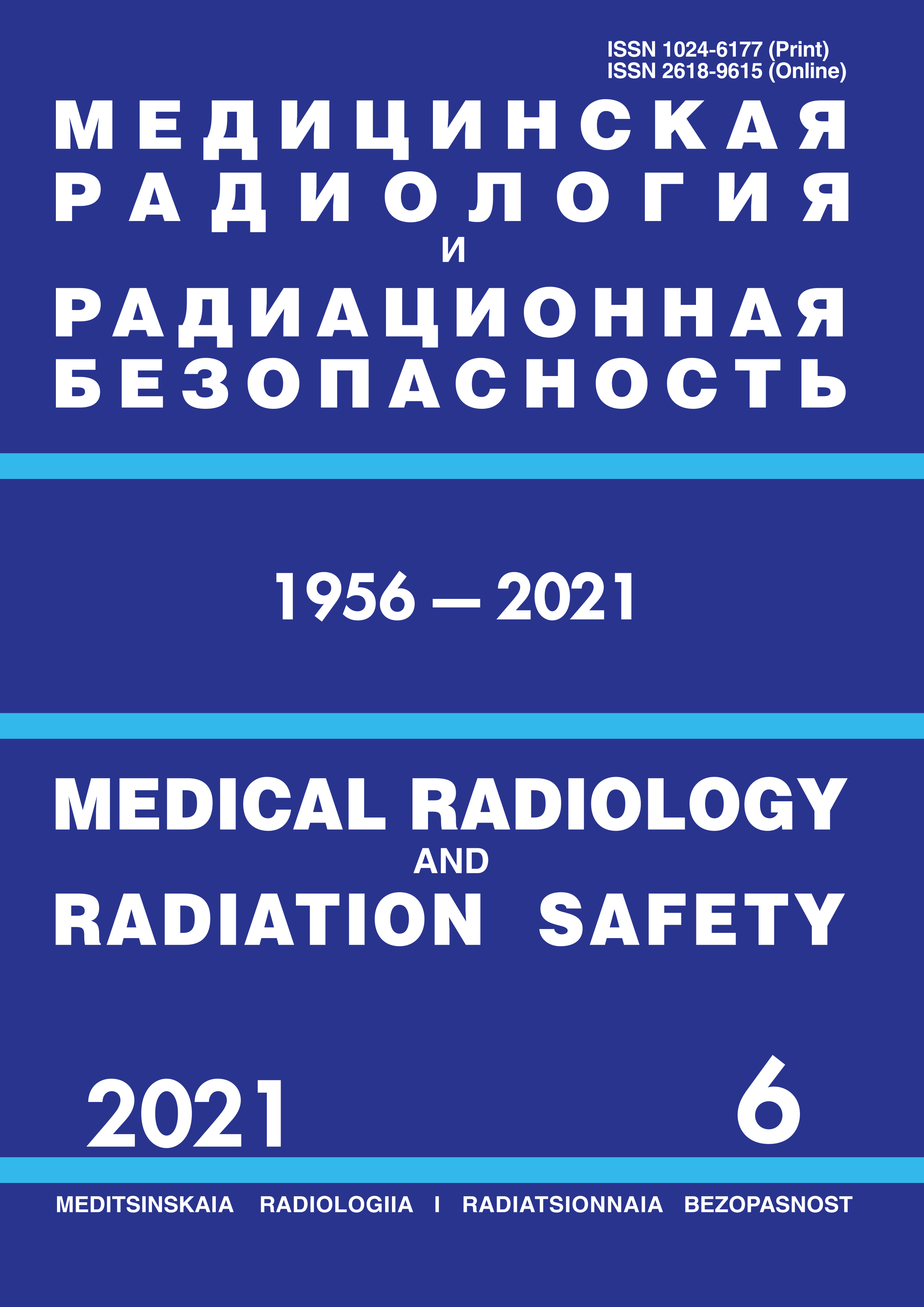Russian Federation
CSCSTI 76.33
CSCSTI 76.03
Russian Classification of Professions by Education 31.06.2001
Russian Classification of Professions by Education 31.08.08
Russian Classification of Professions by Education 32.08.12
Russian Classification of Professions by Education 14.04.02
Russian Library and Bibliographic Classification 534
Russian Library and Bibliographic Classification 51
Russian Trade and Bibliographic Classification 5712
Russian Trade and Bibliographic Classification 5734
Russian Trade and Bibliographic Classification 6212
Russian Trade and Bibliographic Classification 5708
Purpose: Analysis the effectiveness of various methods of radiation studies for the detection of renal angiomyolipomas (RAMLs), including the diagnosis of Wunderlich syndrome. Material and methods: The analysis of the results of a comprehensive radiation study of the kidneys of 115 patients who were diagnosed with focal formation in primary renal ultrasound was carried out. Further, of those 115 people, 47 patients underwent MRI of the kidneys, 60 patients – CT and 8 patients complex MRI+CT, including contrast-enhanced vasculature. Results and discussion: Angiomyolipoma was detected by ultrasound in 38 (33.0 %) of 115 patients, and according to MRI and CT in total in 27 (23.5 %) patients. Coincidence of ultrasound findings and MRI and CT results was in 18 patients. Consequently, the sensitivity of ultrasound in the diagnosis of RAML was compared with MRI – 45 %; when compared with CT – 42.8 %, and specificity – 55 % and 57.1 %, respectively. Reliable signs of RAML in ultrasound were hyperechogenic homogeneous structure, clear smooth contours of the formation. The rounded form of education is statistically unreliable. Statistically significant characteristics of RAML in magnetic resonance imaging are heterogeneous structure, heterogeneous hyperintense MR-signal on T1 and heterogeneously hypointensity on T2-weighted images, always uniformly hypo-Fs for T1 / T2 Fs, with hypo clear boundary between education and renal parenchyma on T1 in the opp phase. Reliable signs of RAML with CT are non-uniform structure of education, with non-uniform x-ray density. Conclusion: Ultrasound diagnosis is necessary for screening kidney disease, while CT and MRI have greater sensitivity and specificity to determine the nature of focal formation. With the development of Wunderlich’s syndrome, a complex of radiological methods, including ultrasound, MRI and CT, allows to diagnose the cause of hemorrhage, as well as to obtain complete diagnostic information necessary for the surgeon to plan treatment.
benign tumors, CT, kidney, MRI, renal neoplasms, sonography, angiomyolipoma. Wunderlich’s syndrome
1. Eble J.N. Angiomyolipoma of the Kidney // Semin. Diagn. Pathol. 1998. No. 15. P. 21-40.
2. Sparks D., Chase D., Thomas D., et al. The Wunderlich's Syndrome Secondary to Massive Bilateral Angiomyolipomas Associated with Advanced Tuberous Sclerosis // Saudi J. Kidney Dis. Transpl. 2011. V.22. No. 3. P. 534-537.
3. Kyo C., Won-Tae K., Won-Sik H., et al. Trends of Presentation and Clinical Outcome of Treated Renal Angiomyolipoma. Yonsei Med. J. 2010. V.51. No. 5. P. 728-734.
4. Alyaev Yu.G., Shpot' E.V., Mosyakova K.M. Nablyudenie iz praktiki: lechenie angiomiolipomy pochki sporadicheskogo geneza // RMZh. 2016. No 8. S. 495-497.
5. Ahmad M., Arora M., Reddu R., Rizvi I. Wunderlich’s Syndrome (Spontaneous Renal Haemorrhage) // BMJ Case Reports. 2012. V.2012. P. bcr2012006280. doihttps://doi.org/10.1136/bcr-2012-006280.
6. Katabathina V.S., Katre R., Prasad S.R., et-al. Wunderlich Syndrome: Cross-Sectional Imaging Review // J. Comput Assist Tomogr. 2011. V.35, No. 4. P. 425-433.
7. Santos S.C., Duarte L., Valério F., Constantino J., Pereira J., Casimiro C. Wunderlich’s Syndrome, or Spontaneous Retroperitoneal Hemorrhage, in a Patient with Tuberous Sclerosis and Bilateral Renal Angiomyolipoma // The American Journal of Case Reports. 2017. No. 18. P. 1309-1314. doihttps://doi.org/10.12659/AJCR.905975.
8. Moratalla M.B. Wunderlich’s Syndrome Due to Spontaneous Rupture of Large Bilateral Angiomyolipomas // Emergency Medicine Journal. 2009. No. 26. P. 72.
9. Kruckevich A.O. Angiomiolipomy: sovremennye predstavleniya i klinicheskie nablyudeniya // Medicinskaya vizualizaciya / Pod red. Kruckevich A.O., Sheyh Zh.V. 2014. № 2. S. 81-89.
10. Korchagin O.Yu., Nechiporenko N.A. Taktika vedeniya bol'nyh s angiomiolipomoy pochki // Zhurnal GrGMU. 2006. № 2(14). C. 81-83.





